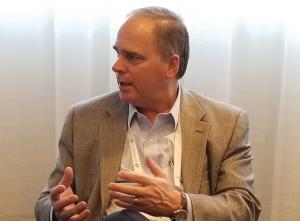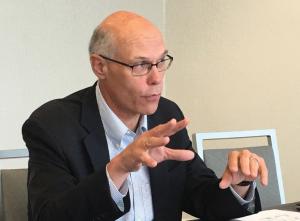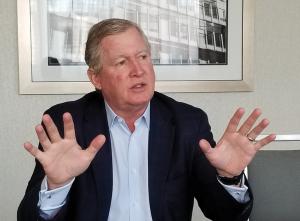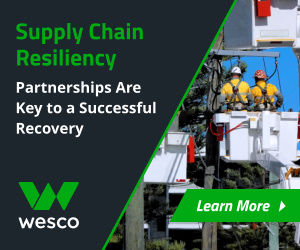Unleashing the Power of Ideas
Tom Flaherty is a partner with Strategy&, part of the PwC network, with over forty years of consulting experience. Most recently, he has led assignments related to standing up innovation programs and capabilities within utilities.
New doors for growth and customer engagement are opening to the utilities industry. These gateways are made possible by the advance of technology deployment and changing expectations from customers.

To the outside observer, it appears the utilities industry is being buffeted by the emergence of disruptive technologies creating stress to its traditional business model. But to its leaders, these technologies are not threats to business stability. They are opportunities to revitalize their companies.
During the Edison Electric Institute Annual Convention in Boston, Strategy& and Public Utilities Fortnightly were joined by five chief executive officers for a 'virtual' roundtable: Tom Fanning from Southern Company, Nick Akins from AEP, Chris Crane from Exelon, Warner Baxter from Ameren, and Pedro Pizarro from Edison International.
These CEOs were generous with their insights about how other companies can learn from their experience. They described the good outcomes and the areas where companies struggle to achieve success. And, no surprise, some common themes emerged.
Seizing the Moment
The CEOs recognize that shifts in the macro-market such as fracking and renewables have changed industry fundamentals. But availability of more economic emerging technologies may create even more impact.
 "I disagree with the New York/California models: they disaggregate customers from the energy company." – American Electric Power’s CEO Nick Akins
"I disagree with the New York/California models: they disaggregate customers from the energy company." – American Electric Power’s CEO Nick Akins
They see changes in customer behavior, particularly at the commercial and industrial level, becoming the new battleground between incumbent utilities and a host of new and traditional entrants.
Yet the CEOs see innovation positioning their companies to lead the evolution of technologies. They want to change the way they are perceived by the market and, more importantly, their customers. To them, innovation is an imperative.
These executives know they have a window of opportunity to participate in what could be another game changer in the sector - changing the role and business model of utilities.
The Customer at the Center
A singular belief shared by the CEOs is that innovation should be pursued with the customer in mind. The CEOs expect successful innovation to provide benefit to the customer. From expanded offerings to simpler engagement to problem resolution to consumption insights.
 Ameren’s CEO Warner Baxter: Ask ‘what if’ and ‘why not,’ as opposed to saying ‘it’s just too hard.’
Ameren’s CEO Warner Baxter: Ask ‘what if’ and ‘why not,’ as opposed to saying ‘it’s just too hard.’
The CEOs recognize their innovation agendas need to prove to regulators and other third-parties they are uniquely positioned to fulfill identified customer needs. These utilities believe that they are the natural partner for customers to work with, but not to the exclusion of other entities.
When effective customer solutions are the desired outcome, there is no monopoly on where ideas can be developed or owned. Smart utilities recognize that their legacy focus often did not provide what customers desired. These CEOs welcome working with a range of vendors to gain capabilities that will position them as partners of choice.
Engaging Internal Talent
The CEOs know that exhorting employees to do more, better, faster is not enough. They acknowledge that successful innovation is led from the top, by them. This means high visibility, constant messaging and reinforcement about the why, what, when and how of innovation.
The enterprise requires support beyond the CEO to change. These changes are illustrated through three primary mechanisms: institutional commitment, employee engagement and incentive alignment.
 "What we want to do is eventually get to the point where work orders are planned based on pictures being taken." – Exelon’s CEO Chris Crane
"What we want to do is eventually get to the point where work orders are planned based on pictures being taken." – Exelon’s CEO Chris Crane
The opening of collaboration sites within their businesses is a prime illustration. These hubs or centers create discrete facilities where employees can freely collaborate across the business.
These companies are adopting formal approaches to employee ideation and informal methods to encourage internal resource participation. Formally, the companies are utilizing crowdsourcing events, trade fairs and innovation exhibitions to sometimes involve thousands of employees and enable idea exchange.
Informally, making it easy for employees to feel their contributions are both valuable and needed is another underpinning. Sending the message that leadership values thoughtful creation allows employees to take a risk, even though their ideas may not come to fruition.
Lessons Learned
The CEOs are aware that companies inside and outside the industry are looking to see how they approach innovation and what they are accomplishing. These entities are looking for successful practices and help in identifying mistakes to avoid.
 Southern Company’s CEO Tom Fanning: What you want is not ‘check the box’ diversity, but diversity of thought, broader cultural bandwidth.
Southern Company’s CEO Tom Fanning: What you want is not ‘check the box’ diversity, but diversity of thought, broader cultural bandwidth.
CEO innovation efforts generally started with a theme that the industry was rapidly changing around these companies. They wanted their companies to be the ones framing that change.
To them, innovation is not just about ideation and hopefully commercialization. It also creates an enterprise environment of continual learning, where the best ideas from anywhere can be implemented.
Successful innovation is marked by taking risks regardless of whether the outcomes occur as planned. Learning from failure is regarded as a table stake of culture change within the business. Companies cannot afford to lose tolerance for experimentation when the need for solutions exists.
The CEOs know they need the entire enterprise acting in concert to achieve their ultimate outcomes. Nurturing a culture of innovation and an open environment that pursues and accepts change is an ongoing emphasis for them.
 "There’s no better radar screen than actually being in the flow, being able to touch and feel what’s going on." – Edison International’s CEO Pedro Pizarro
"There’s no better radar screen than actually being in the flow, being able to touch and feel what’s going on." – Edison International’s CEO Pedro Pizarro
These CEO experiences create insights for the benefit of the utilities industry as companies shape their innovation platforms. With many companies still defining their innovation models, the learnings of these CEOs are valuable input.
Read their interviews here: Nick Akins from AEP, Warner Baxter from Ameren, Chris Crane from Exelon, Tom Fanning from Southern Company, and Pedro Pizarro from Edison International.
Lead image © Can Stock Photo / chones



